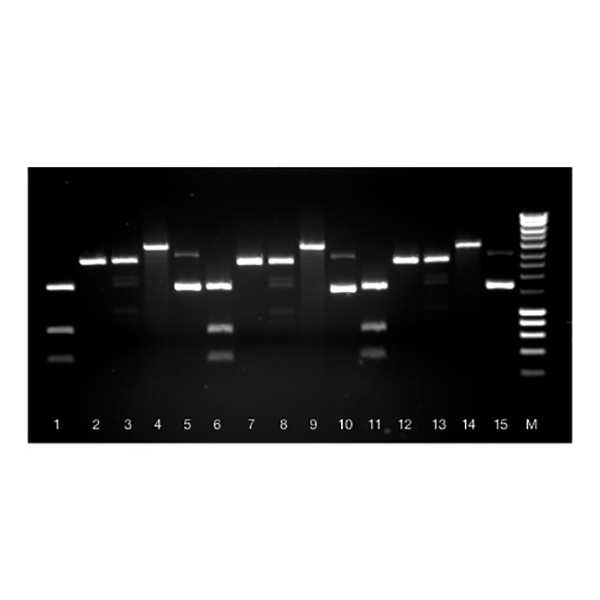Ordering
*link will take you to our exclusive distribution partner site
*link will take you to our exclusive distribution partner site
The ISOLATE II Plasmid Mini Kit provides a simple, efficient column-based method for the isolation of plasmid DNA from bacterial cultures, without the need for hazardous reagents such as phenol.
By combining SDS/alkaline lysis with the speed and ease-of-use of silica-membrane purification, the ISOLATE II Plasmid Mini Kit provides a fast method for the purification of high-quality plasmid DNA. Separate protocols are provided for the isolation of high-copy plasmids, the isolation of low-copy plasmid, P1 constructs and cosmid DNA from E. coli and the isolation of plasmids from gram-positive bacteria such as Bacillus, Staphylococcus, Bifidobacteria or Corynebacteria.
The ISOLATE II Plasmid Mini Kit has been designed to deliver optimal performance in cloning, sequencing as well as end-point PCR alongside any enzyme from the Meridian PCR portfolio, including MyTaq DNA Polymerase. Additionally, the ISOLATE II Plasmid Mini Kit can be used in tandem with the SensiFAST Real-Time PCR Kits for high-performance qPCR.

Reproducible results
pUC19 plasmid was isolated from 5 mL E. coli overnight LB cultures using the ISOLATE II Plasmid Mini Kit and cut with various restriction enzymes, before analysis on 1% TAE agarose gel. Each restriction digestion (lanes 1-6) was performed in triplicate on plasmids from different overnight cultures. The results illustrate consistency in plasmid recovery.
High plasmid recovery
pUC19 plasmid was isolated from increasing volumes of E. coli from an overnight LB culture (0.05 ml, 0.1 mL, 1 mL, 3 mL and 5 mL culture, lanes 1- 5 respectively), using ISOLATE II Plasmid Mini Kit and run on 1.5% TAE agarose gel. The results illustrate the very high binding capacity of the columns in the ISOLATE II Plasmid Mini Kit.
Excellent performance of isolated plasmid DNA in downstream applications
pET19 plasmid was isolated from 3 mL E. coli overnight LB culture using ISOLATE II Plasmid Mini Kit. Sequencing was carried out based on standard T7 promoter and terminator primers, allowing more than 750 nucleotides to be read.
|
Reagent |
10 Preps |
50 Preps |
250 Preps |
|
ISOLATE II Plasmid Mini Spin Columns |
10 |
50 |
250 |
|
Collection Tubes (2 mL) |
10 |
50 |
250 |
|
Resuspension Buffer P1 |
5 mL |
15 mL |
75 mL |
|
Lysis Buffer P2 |
5 mL |
15 mL |
100 mL |
|
Neutralization Buffer P3 |
5 mL |
20 mL |
100 mL |
|
Wash Buffer PW1 |
6 mL |
30 mL |
2 x 75 mL |
|
Wash Buffer PW2 |
6 mL |
12 mL |
2 x 25 mL |
|
Elution Buffer P |
13 mL |
13 mL |
60 mL |
|
RNase A (lyophilized) |
2.5 mg |
6 mg |
30 mg |
|
Bench Protocol Sheet |
1 |
1 |
1 |
All kit components should be stored dry and at room temperature. When stored under the recommended conditions and handled correctly, full activity of kit reagents is retained until the expiry date indicated on the outer box label.
Note: RNase A is supplied lyophilized. On addition of Resuspension Buffer P1, the RNase A solution should be kept stored at 4°C. When stored at 4°C. the RNase A solution is stable for at least 6 months.
Ambient temperature.
For the optimal recovery of large RNA/DNA fragments it is necessary to optimize the elution step. To increase the recovery rate it would be helpful to use a larger volume for elution, incubate the column with the elution buffer prior to centrifugation and use repeated elution steps. To avoid excessive dilution it may be helpful to reapply the eluted fraction again. Furthermore it could be helpful for DNA elution to heat the elution buffer to 70°C.